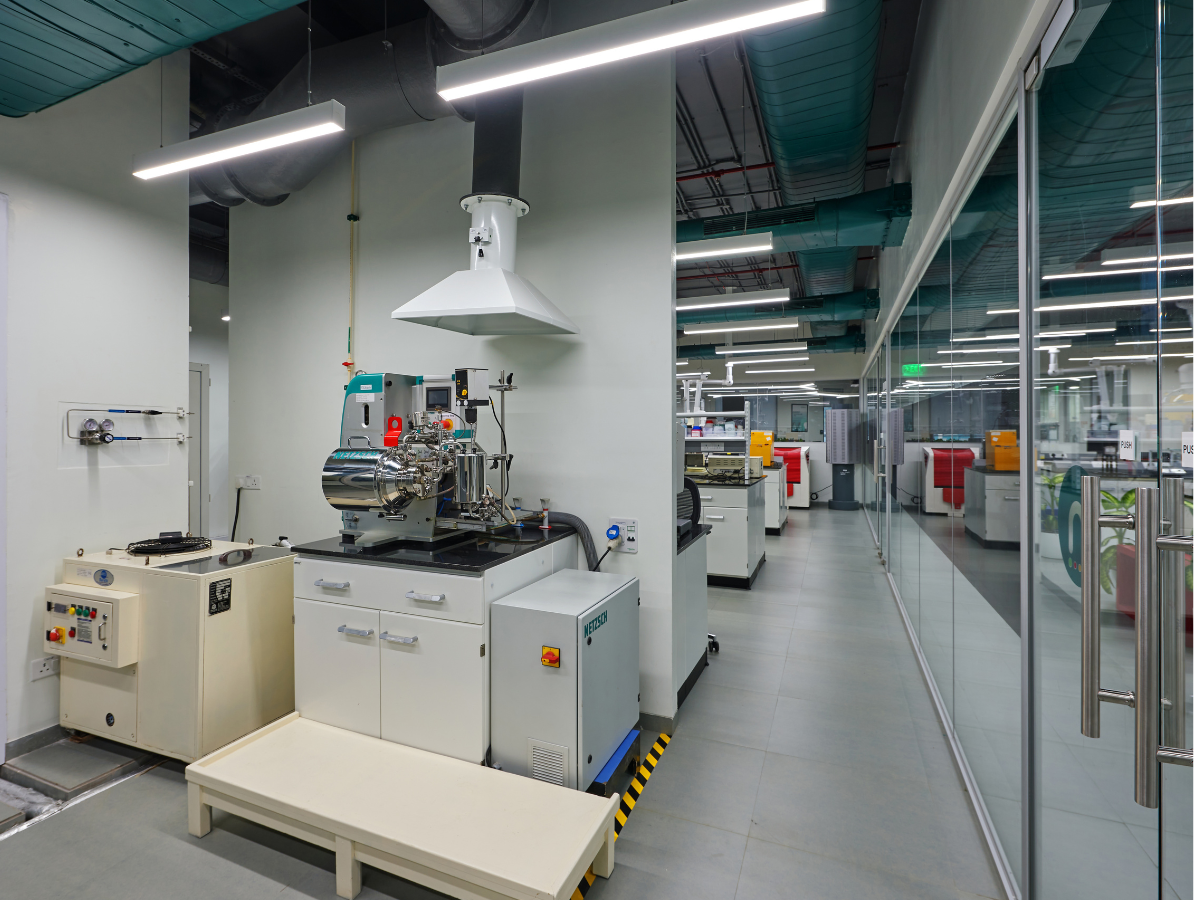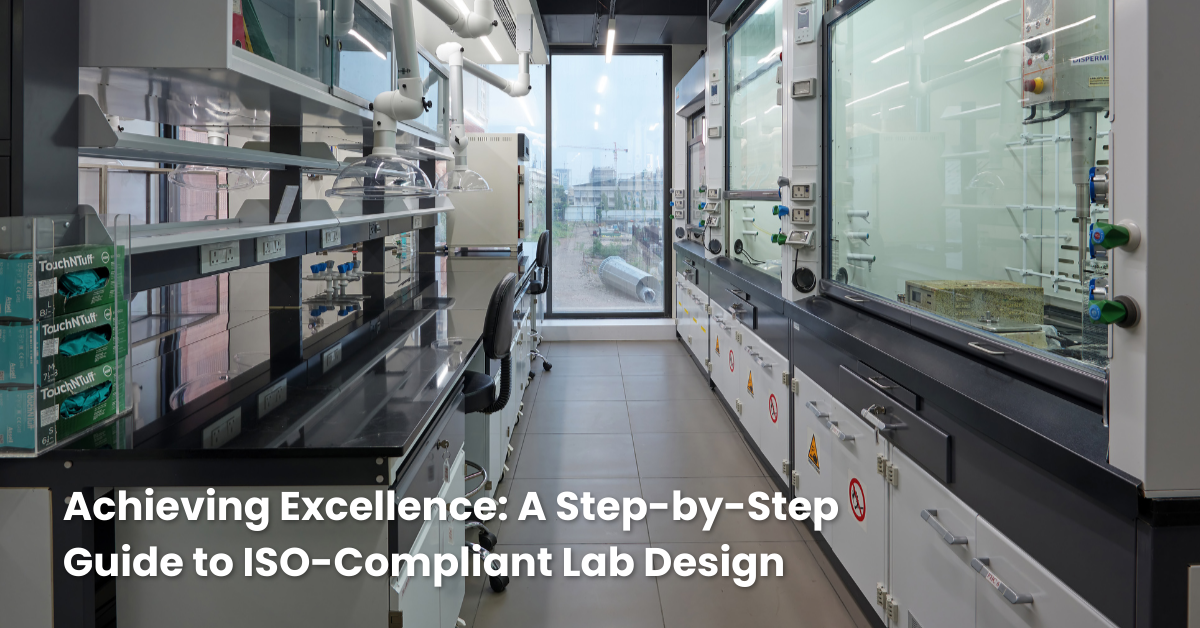ISO (International Organization for Standardization) standards play a crucial role in ensuring that laboratories meet high levels of quality, safety, and operational efficiency. Laboratories that comply with ISO standards not only improve their reliability but also gain recognition for maintaining globally accepted quality protocols.
In this article, we’ll explore how to design your laboratory to ensure compliance with ISO standards, covering key aspects such as layout, safety, documentation, and operational procedures.
1. Understanding ISO Standards for Laboratories
ISO standards are globally recognized guidelines that set benchmarks for quality, safety, and operational efficiency. Some of the most relevant ISO standards for laboratories include:
- ISO 17025: Specifies general requirements for the competence of testing and calibration laboratories.
- ISO 15189: Applies to medical laboratories and focuses on the quality and competence in laboratory testing and services.
- ISO 45001: Focuses on occupational health and safety management systems, ensuring a safe workplace environment.
Compliance with these standards ensures that laboratories meet regulatory requirements, reduce risks, and improve overall lab performance.
2. Key Design Elements for ISO-Compliant Labs
To achieve ISO compliance, the physical design of your lab is critical. Here are some key design elements to consider when constructing or renovating an ISO-compliant laboratory:
A. Lab Layout and Workflow
The layout of a lab directly impacts productivity and safety. An ISO-compliant design ensures that the workflow is logical, minimizing contamination and ensuring smooth operations.
- Zoning: Separate areas for sample handling, analysis, storage, and waste disposal. This segregation helps prevent cross-contamination and improves the efficiency of workflows.
- Logical Flow: Equipment and workstations should be arranged to promote a logical workflow. For example, sample preparation areas should be located near testing areas, and waste disposal should be easily accessible but separate from testing zones.
B. Material Selection
ISO standards emphasize the use of high-quality, durable materials that are resistant to chemicals, fire, and contaminants.
ISO 17025 and ISO 15189 specify that materials used in lab construction should be easy to clean and maintain, reducing the risk of contamination. Choose materials like stainless steel or lab-grade epoxy for work surfaces, which are resistant to chemicals and easyx` to sanitize.
C. Ventilation and Air Quality Control
Ventilation systems must comply with ISO 45001 to ensure proper air quality and reduce the risk of exposure to hazardous substances.
- Fume Hoods and Exhaust Systems: Install compliant fume hoods and exhaust systems in areas where chemicals or hazardous substances are handled. This helps maintain air quality and prevents the buildup of toxic fumes.
- HVAC Systems: ISO standards require that HVAC systems in laboratories maintain consistent airflow and prevent contamination through proper filtration and air circulation.

3. Ensuring Safety and Hazard Control for ISO Compliance
Safety is a top priority in ISO standards, and laboratory design must reflect this by incorporating appropriate hazard controls.
A. Emergency Equipment
All ISO-compliant laboratories must have emergency equipment installed in key locations, such as:
- Emergency Showers and Eye Wash Stations: These should be easily accessible from any point in the lab and must comply with the standards outlined in ISO 45001 for occupational health and safety.
- Fire Suppression Systems: Install fire extinguishers, alarms, and sprinklers that meet ISO requirements. Make sure these systems are regularly inspected and maintained.
B. Storage for Hazardous Materials
ISO standards, especially ISO 17025, mandate that hazardous chemicals and materials be stored safely to avoid contamination or accidents.
- Ventilated Storage: Use ventilated cabinets for flammable and hazardous chemicals to prevent the buildup of vapors.
- Segregation of Chemicals: Store incompatible chemicals separately to avoid reactions that could result in safety hazards.
4. Documentation and Quality Management Systems (QMS)
ISO compliance is not only about the physical design of the laboratory but also about maintaining proper documentation and quality control processes. Establishing a Quality Management System (QMS) is essential for meeting ISO requirements.
A. Standard Operating Procedures (SOPs)
Document all lab processes with clear and detailed Standard Operating Procedures (SOPs) that comply with ISO 17025 or ISO 15189. These procedures should cover:
- Equipment usage and maintenance.
- Sample handling and testing.
- Waste disposal.
- Emergency response protocols.
Regularly update SOPs to reflect any changes in equipment or processes.
B. Calibration and Equipment Maintenance
ISO standards require regular calibration of equipment to ensure accurate testing results.
- Calibration Schedules: Maintain a documented schedule for calibrating equipment like balances, thermometers, and analytical instruments.
- Maintenance Logs: Keep detailed records of equipment maintenance and repairs, ensuring that all equipment is functioning within ISO guidelines.
C. Record Keeping and Data Management
ISO-compliant labs must keep thorough records of all processes, testing results, and audits. Implement a Lab Information Management System (LIMS) to:
- Track sample information, including storage and testing data.
- Record equipment usage and calibration.
- Manage inventory and reagent tracking. LIMS systems help streamline record-keeping and make audits easier by providing a digital trail for all lab activities.
5. Training and Continuous Improvement for ISO Compliance
Ongoing training and continuous improvement are essential elements of ISO compliance. Laboratories must ensure that staff are well-trained on both ISO standards and lab-specific procedures.
A. Staff Training Programs
ISO standards require regular staff training to ensure everyone is familiar with safety protocols, proper equipment handling, and lab procedures.
- Safety Training: Train staff on emergency procedures, such as fire drills, chemical spills, and equipment malfunction protocols.
- ISO Standards Training: Provide regular updates on ISO requirements, ensuring that all team members understand the importance of maintaining compliance.
B. Continuous Improvement and Audits
ISO standards emphasize continuous improvement to ensure that labs adapt to new technologies, regulations, and safety requirements.
- Regular Audits: Conduct internal and external audits to ensure compliance with ISO standards. These audits help identify any gaps or areas for improvement.
- Feedback Systems: Implement feedback mechanisms to allow lab personnel to report issues or suggest improvements for lab safety, workflow, or compliance.
6. Common Pitfalls to Avoid When Designing an ISO-Compliant Lab
When striving for ISO compliance, labs can make some common mistakes that lead to non-compliance. Here are some pitfalls to avoid:
- Ignoring Workflow Efficiency: A poorly designed lab layout can lead to bottlenecks, contamination, or inefficient processes. Prioritize a workflow that minimizes movement between areas and improves sample handling efficiency.
- Overlooking Documentation: Failing to keep proper records of equipment calibration, safety checks, and SOPs can result in non-compliance. Maintain thorough documentation and regularly update records.
- Underestimating Safety Requirements: Failing to install compliant safety systems or ignoring ventilation requirements can result in fines and safety risks. Ensure that all safety systems are ISO-compliant and regularly inspected.
Conclusion: Designing a Lab That Meets ISO Standards
Ensuring ISO compliance in lab design is a comprehensive process that requires careful planning, attention to detail, and continuous monitoring. From proper lab layout and material selection to maintaining documentation and staff training, ISO-compliant labs are built for both safety and efficiency.
SbyD offers turnkey lab design and build services that adhere to international standards like ISO 17025, ISO 15189, and ISO 45001. Our team of experts can help you design a laboratory that not only meets your current needs but also complies with all necessary regulations. Contact us today to ensure your lab is designed for success and compliance.

